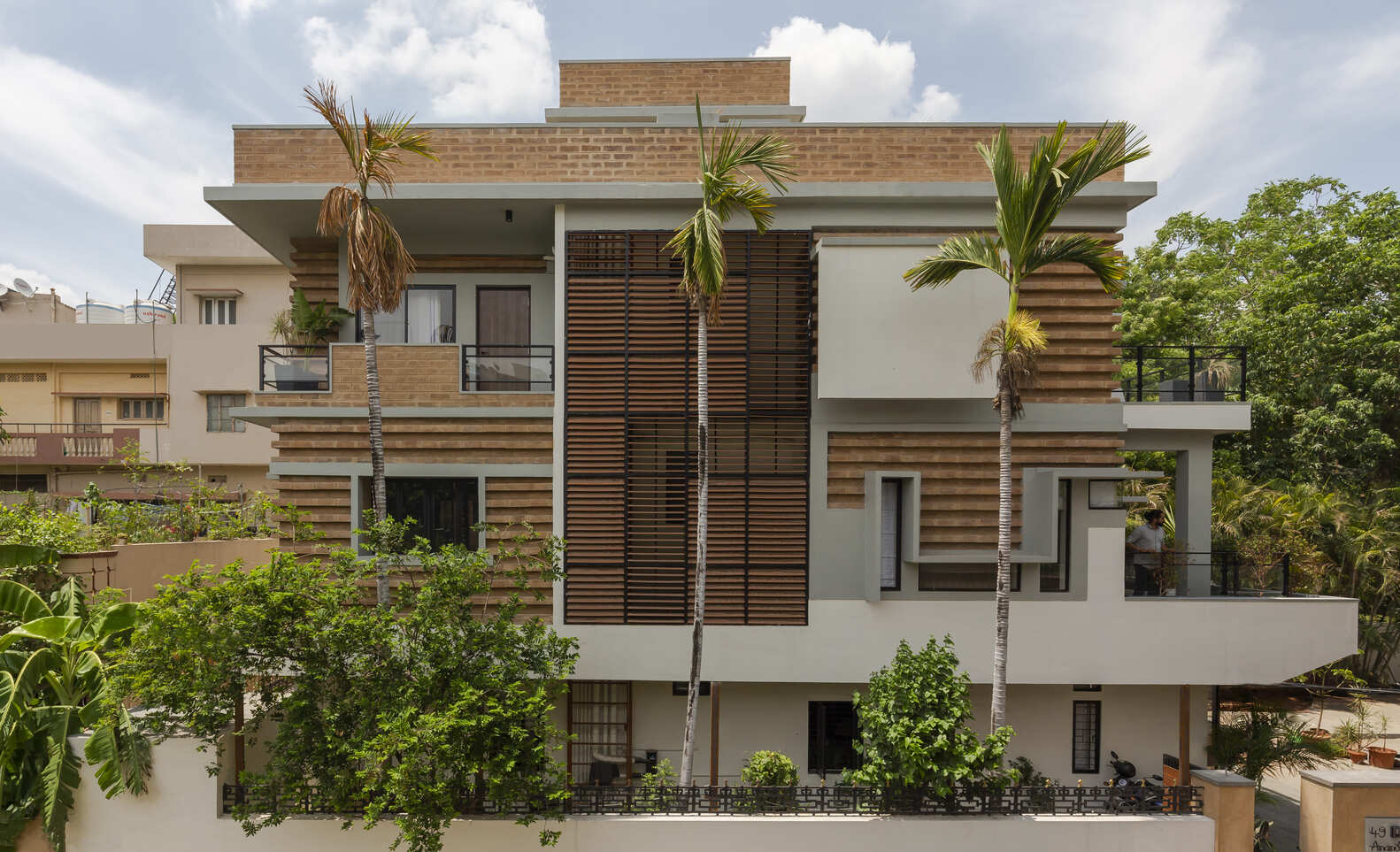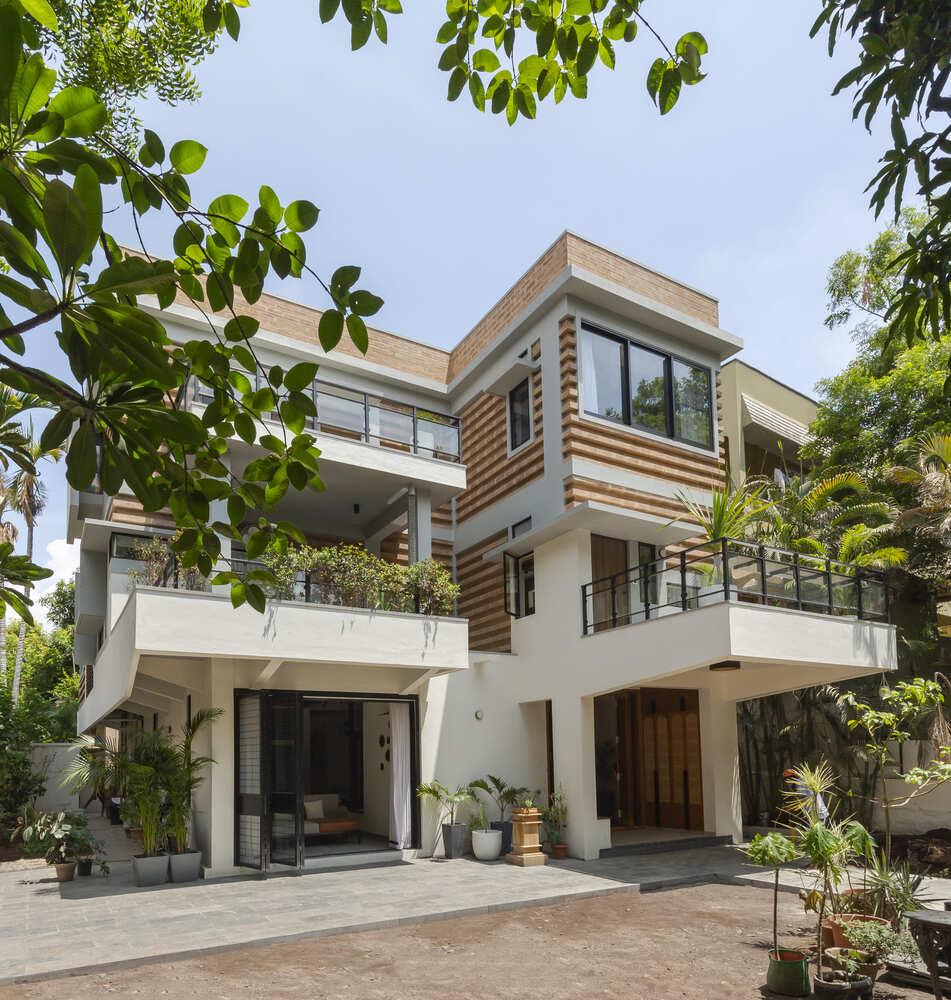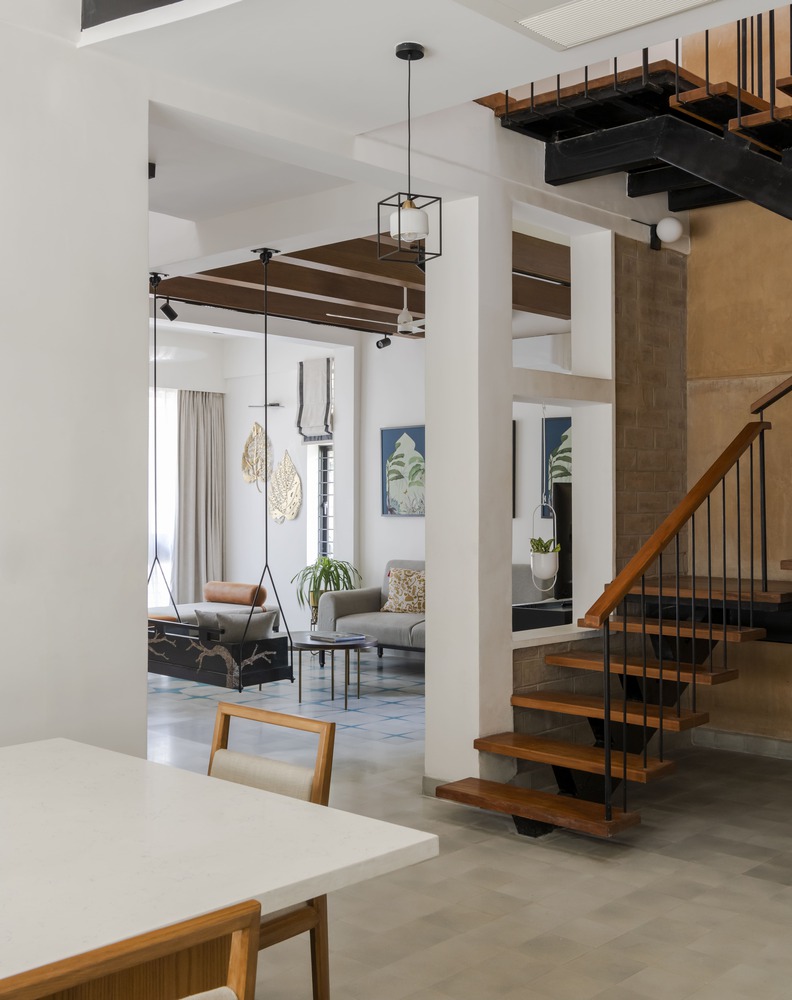



Text description provided by the architects. The site is located in a residential area of central Hyderabad, surrounded by other houses. Two existing structures - a two-story house and a small clinic, both built in the 80s - were separated by a large garden, shaded by old mango trees. The brief was to build a home for the client's family that would reflect their new space requirements and contemporary taste. In addition, a small office + production space and staff quarters were to be accommodated.
As the original buildings were frame structures in good condition, it was agreed to renovate and extend the existing house, rather than demolish it completely. This would be both economically and ecologically beneficial, minimizing the generation of construction waste.
While the functional arrangement of the ground and first floors were largely retained, the excess circulation areas were trimmed and openings were enlarged, to add new rooms or enhance existing spaces. A small hall on the first floor was demolished to create a double-height space for the dining on the lower level. A larger semi-circular concrete staircase made way for more compact stairs in metal and wood, which connect all floors through an open triple-height volume while making space for additional toilets. An elevator shaft was carved out of the existing foyer.
The second floor was an almost completely new addition, meeting the current needs of the clients - a children's bedroom, a home theatre-cum-den with a pantry for entertaining guests, and a yoga space - apart from the existing master bedroom, which was remodeled and expanded.
The double and triple-height spaces, as well as the open-to-sky yoga space, are screened from neighboring buildings, using fluted glass windows or glass bricks for the sides, and a pergola salvaged from the original house for the top. The building primarily opens outward on the east towards the garden, where the only additions to the lower floors were made in the form of cantilevered balconies and terraces.
New walls were built in compressed stabilized earth blocks, with external walls constructed in alternating courses of 9" and 6" masonry - a creative resolution of material shortages encountered during the COVID-19 pandemic. The resulting striated pattern is both aesthetically novel and thermally beneficial, self-shading the facade from solar radiation.